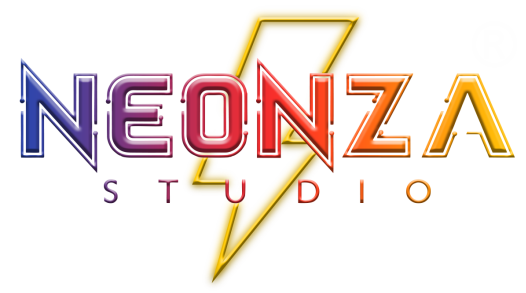Neon signs originated in the early 1900s, making neon sign wall art pretty old. They also applied it at first in advertisements, and people fell in love with these light tubes of light running with beautiful colors and stunning designs. Thus, neon signs became associated with the dynamic lights of the large metropolises of the world, the signs of Broadway, and the neon fronts of the Las Vegas casinos. The allure of neon was undeniable, as these signs added a touch of magic to the urban night, making ordinary establishments feel like must-see destinations.
Artistic Revolution: Neon as a Medium
Gradually, neon signs in art moved past the simple use of art as an advertisement to something that could be considered an actual art movement. Neon art flourished from the 1960s to the 1970s, and artists started using different shapes of neon tubes, various colors of neon, and even messages written in neon art. This period saw neon change from a commercial tool to an art medium in its own right. Neon infrastructure began to be used in galleries and other public areas, turning into art objects with total signage. These pioneering artists paved the way for neon to be recognized as a legitimate medium in the art world.
Contemporary Trends: Neon in Modern Design
Neon sign art is now a functional, stylish accessory in today's world, used by interior designers, event managers, and housemakers. Although recent neon signs are not limited to outdoor utilization, they can be installed inside the buildings, giving a modernist retro touch to the interior lighting. Today, neon art ranges from modern and clean without decals to elegant, unique creations, and such an element is a favorite among people who want to add character to a space. This year, the sober interiors are decorated with quotes or corporate slogans written in neon lights, which is far from a trend.
The Digital Influence: LED and Neon Hybrids
Nowadays, one of the biggest trends in neon, with modern LED technology, is a combination of classic and high-tech. These are combination signs where old neon technology is used but is xenophobic for the improved energy efficiency of LEDs. This means that the possibilities for the shape are more detailed, the choice of colors is vast, and the overall durability is higher. Therefore, contemporary neon signs are more straightforward to obtain, and since they are more diverse and adaptable, they address different people with different tastes.
Conclusion: A Bright Future for Neon Art
The versatility and dynamism denoted by the change of trends of neon sign art from the traditional type to the modern type depict the flexibility of this art. It developed as a means of gaining consumer attention and has become a well-known form of art that sets trends in design in many countries. The future of neon art strongly depends on future technological development, which means the options are virtually endless. Whether you're looking to make a bold statement or add a touch of nostalgia to your space, neon light signs offer a timeless and versatile solution. Embrace the glow and let your creativity shine through the vibrant world of neon.

